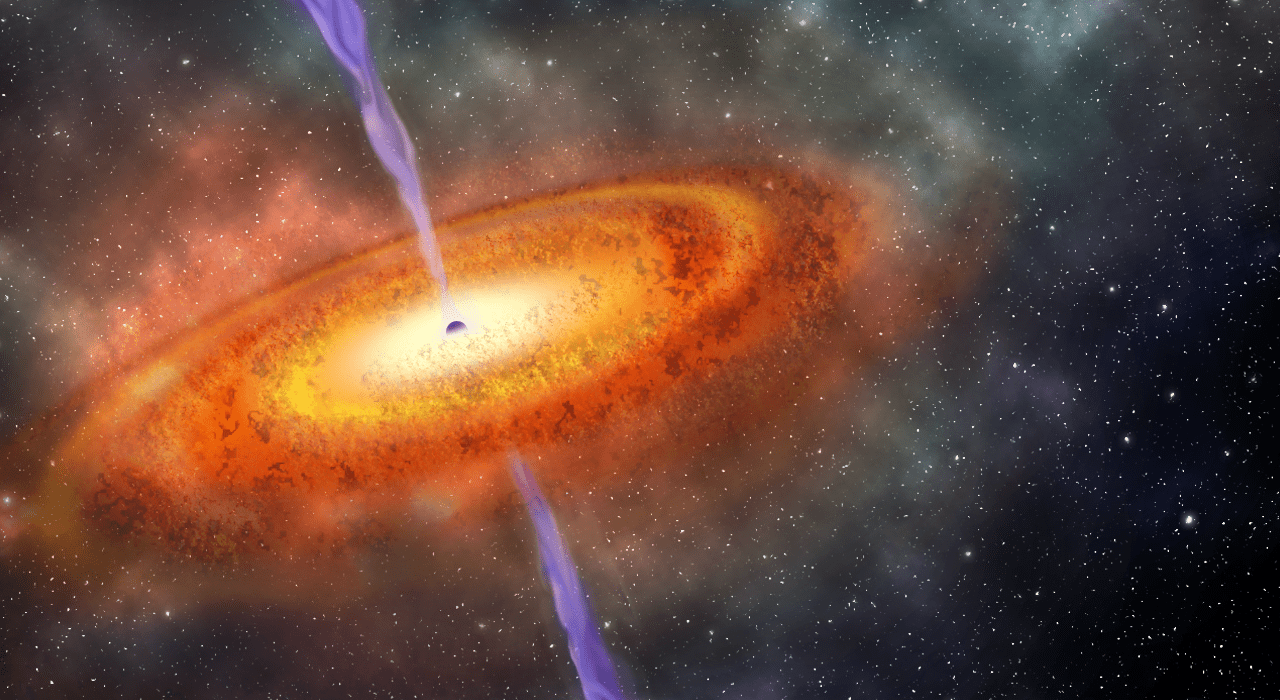

There was a bang. A big one. It was the beginning of everything, but for several hundred million years, all was darkness. Then, lights started flickering to life, stars and gases and galaxies all coming online.
One of the brightest lights during that dawn had a dark and hungry hole at its heart. More massive than 800 million suns, the black hole existed just 690 million years after the Big Bang, when the universe was still an infant.
Researchers, including Eduardo Bañados, reported the existence of the black hole and its accompanying bright quasar in a paper in Nature this week. The astronomers were looking for evidence of black holes in these early days of the universe, but they were still surprised at the sheer size of this one, named J1342+0928.
Black holes are points in the universe where gravity is so intense that nothing can escape. Not rocks, not gas, not even light. Near large black holes, surrounding material swirls around to form something called an accretion disk. Material in the disk spins at thousands of miles per second, heating up as it moves and slams into other bits of dusts and gas, all riding the same frantic carousel toward doom.
The material itself spins down into the black hole, never to be seen again, but its jostling releases energy that heads out into the universe in the form of immensely bright heat and light. That light made the quasar that Bañados and his co-authors were able to detect, which they used to estimate J1342+0928’s surprising mass.
Bañados says that a typical black hole, forming as a star collapses, might have the mass of 50 to 100 suns. “If you make it grow, feed it material like gas from its surroundings and let it grow for 690 million years, you wouldn’t be able to reach the size of this supermassive black hole,” Bañados says.
To figure out how this black hole could have gotten so large so quickly, observational astronomers like Bañados must team up with theoretical astronomers and astrophysicists. In the process, they’re also looking into ever-so-slightly broader questions, like the evolution of everything. “This object is so distant and so luminous that it provides a laboratory to study the early universe,” Bañados says.
Bañados has discovered about half of the most distant quasars on record, but this one—while not the most massive—is the furthest of them all. Because light takes time to travel, the more distant an object is, the earlier back in history we’re peering when we look at it. So this object comes from earlier in the universe’s lifespan than any of the others scientists have observed.
“This record is nice, but we’re not doing this for the record,” Bañados says. “This is so mature that I would be very surprised if this is the first quasar ever formed. I hope we or someone else will break this record soon.”
This particular quasar is so bright that it outshines the galaxy where it’s located—it’s 1000 times more luminous. And it’s not like that galaxy is a slouch either, even though the quasar at its heart drowns it out in both the optical and ultraviolet wavelengths of light. Fortunately, if you look at the galaxy in longer wavelengths, you can start to see some details. Bañados is a co-author on another paper that came out this week in The Astrophysical Journal Letters that focuses on the galaxy around the black hole. They the galaxy was positively choked with interstellar dust, producing somewhere around 100 new solar masses (the mass of our star) per year. Our galaxy only makes about one solar mass per year.
They were also able to detect something about the neighborhood of space around the black hole, finding that about half of the area had un-ionized hydrogen (which would have blocked out light, leading to those first few hundreds of millions of years of darkness in the universe) and half had ionized hydrogen, indicating that this black hole could have existed at the time when the universe switched from being dominated by the former to the latter.
“How this happened and when this happened have fundamental implications for the evolution of the universe later on,” Bañados says. “But we need to find and keep searching for more objects even further away and try to repeat that experiment.”
Luckily, there are now more opportunities to look into those universal origins. In 2018, Bañados and other researchers around the world will use a variety of telescopes to explore this object more thoroughly and look for others in the night sky.
“We’re a very fortunate generation,” Bañados says. “We’re the first human beings to have the technology to study and characterize in detail some of the first galaxies and black holes that formed in the universe. If that’s not fascinating, I don’t know what is.”
